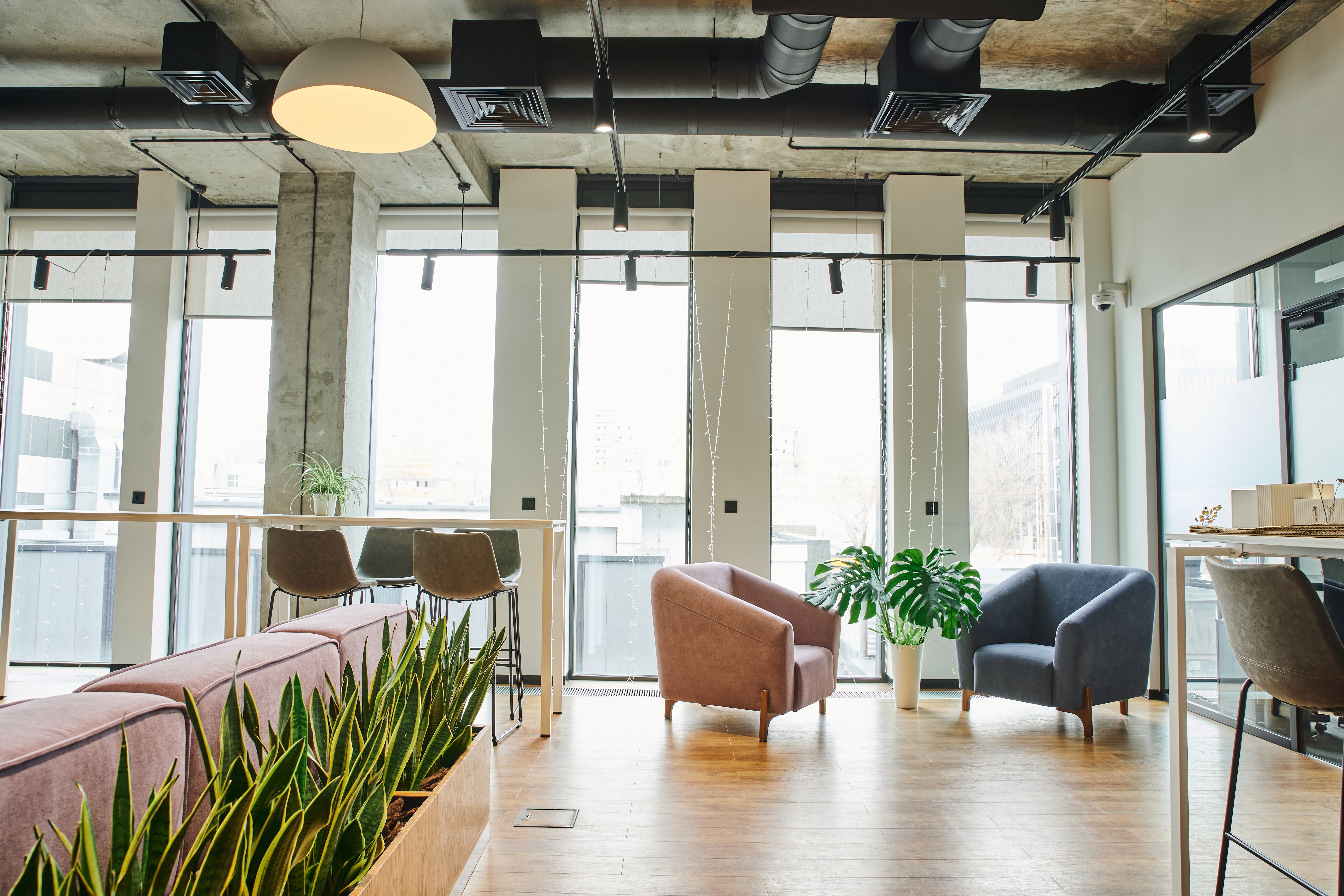11/02/2025
Your people are your greatest asset. They're the force driving your business towards ambitious goals and making your office an enjoyable place to work and grow.
For these reasons, employers should find solutions to tackle the impact that work stress often has on employees' mental health. So, how can you promote a happy, productive workplace and avoid the negative effects of stress and burnout?
From designing a welcoming office to creating opportunities for physical exercise, there's a lot you can do to support your teams' wellbeing. Let's explore a few strategies and lessons on how to handle stress in the workplace.
Employee wellbeing and mental health are deeply connected to your business' success. According to a recent World Economic Forum report, investing in employee health could generate nearly $12 trillion in global economic value, while also improving productivity and employee attraction and retention.
Below, we'll examine some simple but effective steps companies can take to help employees manage stress, avoid negative thoughts, and keep their workload at a manageable level.
All mental health professionals agree on the benefits of physical health and the way regular exercise relieves stress among employees. Companies should incorporate these findings into their values and provide the means to ensure a healthy lifestyle during and around working hours.
For instance, they could include a gym pass or discount in the benefits package, set up a cycle to work scheme, or offer employees optional yoga classes outside core office hours.
Other cost-effective ideas include: ensuring employees have at least a one-hour lunch break to go for a long walk, or offering a standing desk space to promote movement throughout the workday.
When workloads increase and there aren't clear boundaries between office and home life, employees may start feeling overwhelmed. This feeling can turn into chronic stress or other conditions over time.
To avoid burnout, inform all staff about your commitment to supporting emotional health and create an open channel of communication to reassess task priorities and plan a more manageable schedule for those who are struggling.
You can also help balance work and personal lives by suggesting non-contactable hours for everyone or encouraging employees to leave their computers in the office – eliminating the temptation to do extra work in the evening.
Flexible hours or hybrid work options can also help mitigate workplace stress.
Hybrid work, in particular, allows employees to achieve a better work-life balance by eliminating long commutes and having more time to spend with family and pets. It can also provide healthy breaks from common stressors found in the office, such as noisy open spaces and distractions that negatively impact productivity.
Most workers are well aware of these benefits, and 90% of them agree that flexible hours or hybrid work would improve their morale.
However, with remote work, the line between work and home can become increasingly blurry. You should ensure employees recognise the dangers of burnout and are deterred from working beyond normal hours.

In a recent article, we discovered how the environment where people work can influence their mood and wellbeing in countless ways. With a few simple design tips, employers can help their teams relieve stress and boost their productivity levels.
For instance, adding natural elements like plants or wooden furniture or painting the walls with calming colours like green or light blue can have a soothing effect on workers, contributing to lower levels of anxiety.
The presence of abundant natural light is another critical factor affecting employee happiness. While a dimly-lit office can have a depressing effect, an office with large windows and good sun exposure can significantly increase the production of vitamin D and beta-endorphins, leading to a more energetic and happy team.
Sometimes a stressful situation can arise from simple misunderstandings. A lack of clarity on targets or shifting goals, for example, can make many employees feel like they are never doing enough, leading to self-doubt and overworking.
Communication is once again the best solution and can dissipate the problem promptly. Make sure to schedule regular 1-2-1s with team members to discuss individual performance, provide relevant advice, and listen to potential concerns.
Teams should be focused on collaboration, working in perfect harmony to propel your business forward. But when personal friction affects this balance, the whole group struggles, impacting productivity and mental health.
By creating a friendly environment – where communication is respectful and constructive – and training a responsive HR department, you can prevent conflict among colleagues or quickly resolve problems if they arise.

Workplace stress can be challenging. In some occasions, it's exacerbated by pre-existing conditions, but most times it can be caused by a plethora of converging stressors.
Even a particularly cold and dark winter can have significant effects on people's morale, causing a type of depression called Seasonal Affective Disorder (SAD).
Acknowledging these challenges and reassuring employees of your unwavering support can be the first step to spreading awareness and avoiding the stigma sometimes associated with depression and burnout.
Additional steps include providing manuals and techniques to mitigate anxiety, meditation lessons, and specialised support through an Employee Assistance Programme (EAP) to help with low mood and depression.
Sometimes, happiness can be found in the small things: a warm cup of tea on a rainy day or a refreshing glass of water before your big presentation.
But happiness can also be prevented by small things. Did you know, for instance, that just a 1% drop in hydration can trigger the bodily sensation of thirst and a series of biological mechanisms that generate discomfort? Even mild dehydration can increase the production of cortisol, a hormone associated with stress response.

Therefore, by providing employees with water-rich snacks like oranges, apples, and blueberries, or investing in a state-of-the-art hydration hub, you can reduce stress at work.
In particular, Zip Water's innovative HydroTap solutions offer a convenient way to instantly access pure-tasting, filtered water in the workplace – either chilled, sparkling, or boiling for delicious hot drinks.
HydroTap helps you create moments of pause in a busy workday. Grabbing a tea or coffee becomes a chance to step away from your desk, catch up with colleagues, and chat about weekend plans. It enables you to carve a moment of mindfulness, a quick reset before diving back into work with more focus and more energy.
Get in touch to learn more about our extensive range of products, or discover how Zip can support your workforce's wellbeing.
Talk to us about your next project, request a brochure or arrange a full product demo with one of our team.
